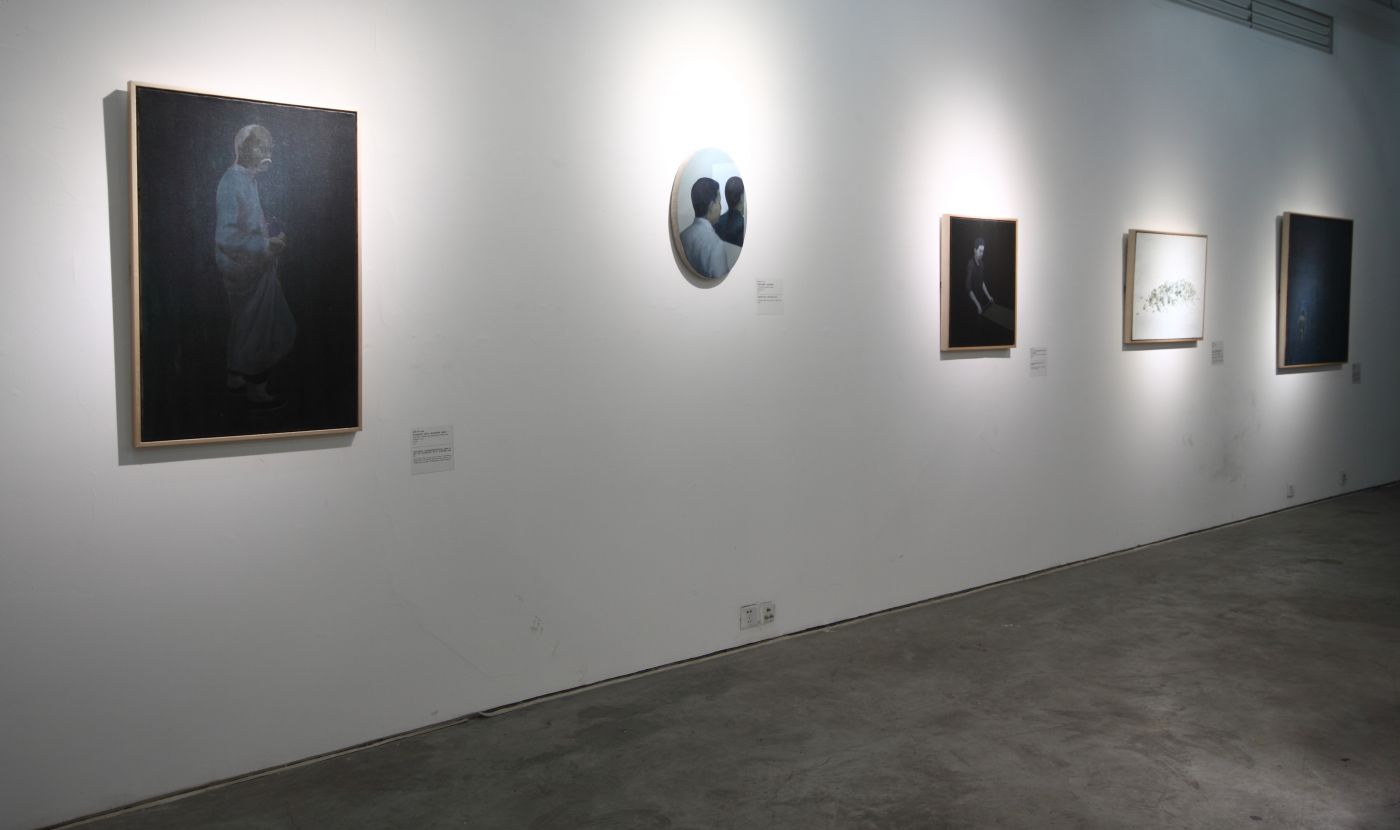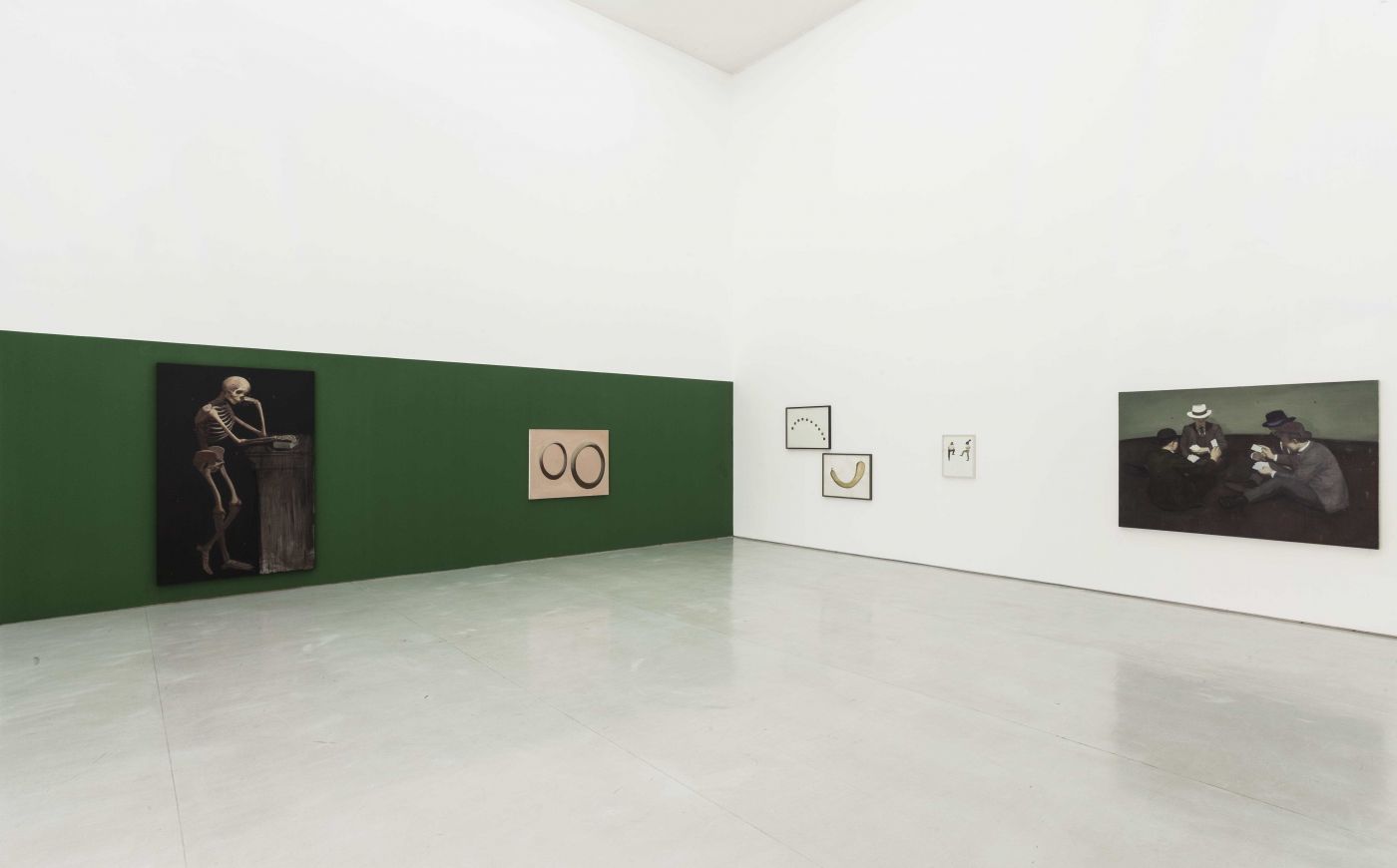Zhai Liang 翟倞
Liste Year
Year of Birth
Country of Birth
Presented by
2021
1983
China
A Thousand Plateaus


Zhai Liang (b.1983) began to learn painting in junior high school. Since his mother is from Tianjin, a northern city in China, he attended the Fine Arts High School in Tianjin.
In his junior year there, a teacher took him to Tianjin Academy of Fine Arts for a lecture about Joseph Boyce. He asked: Who is Boyce? The teacher said that it was Andy Warhol in Europe. He thought to himself: Who is Andy Warhol?
In 2002, he was admitted to the Sichuan Fine Arts Academy. He began to read Boyce's autobiography in his freshman year. After graduation, he ...
Zhai Liang's work is known for the fusion of pictorial representation and literalization. His exploration of the relationship between image and text is represented in his iconic series of works titled "The Garden of Forking Paths"(2011-2015).
In response to Jorge Luis Borges' novel <The Garden of Forking Paths>, Zhai Liang transfers himself into a reader, a literary critic and Borges himself in three exhibitions - "Reader" (2011), "Critic" (2013), and "Author" (2015). Using the exhibition space to build a continuous dialogue with classic texts, these three exhibitions regurgitate the complicated reading experience and implants physiological emotions, realistic memories, and metaphysical reflections.

The exhibition "Reader"(2011) takes some fragments of the plot of Borges' novel and transfers it into visual images and scenes. There are very few narrative elements in his paintings, instead, Zhai only shows some basic figures or strange scenes. However, the works are always related to the plots and logic of the novel. This connection between one image to the other is also based on the interpretation of the pictures by the plot, making the works in the exhibition a reminiscent whole.
Read More about Zhai Liang's three exhibitions "The Garden with Forking Paths"






The work "How Is Inspiration Generated" (2015) overlooks the atrium under the spiral staircase of the Metropolitan Museum, Zhai does not fully dive into the biographical depiction of the subject, but rather stays in Borges’ inner thinking process, in which some possible moments of inspirations lie and for which visual associations and transformations are found.
Borges regards absurd and fantastic historical texts as the starting point for reimagining and recognising. From him, Zhai learned how to find a clue - that let him immerse in and meanwhile be able to travel through the labyrinth of knowledge, so as not to lose the self as the creator.
In his another exhibition "Catalog—The Library of Babel " (2014), Zhai masters such way of thinking and creating.

This exhibition is related to two books - Borges' novel <The Library of Babel> and the personal encyclopedia <The Night Ferry> written by Zhang Dai in Ming Dynasty (300 years ago).
"This project is about the concept of the Library of Babel. I sit in the exhibition hall and work, performing the author of <The Night Ferry> - Zhang Dai himself. Such a notebook-like encyclopedia makes me feel that Zhang Dai is very much like that kind of people mentioned in Borges' novel <The Library of Babel>. In that novel, the world is a library, and everyone is looking for an ultimate book."
- Zhai Liang

Zhai Liang purposely employs corrupting mistakes to reconstruct the encyclopedia, and in return it points to Borges’ ultimate book that contains everything. He reproduces the process of somebody searches for a certain book in a library, reconstructs the text through analysing characters, absurdity, history, appearance, different classes, and space (similar to the structure in <The Night Ferry>), forms a “visual knowledge catalogue”.
This "malformed classification" helps Zhai to get rid of the cognitive style that derives from the text, and thus allow painting properly return back to a certain degree of absurdity and chaos. Those retained cultural codes — words, have already been separated from their original backgrounds and orders, becoming the vehicle of Zhai's self-projection. This is even more visible in his later series of work "Grid" (2019).




"Poetry has a magical power, it can turn ordinary words into mysterious and touching through various combinations. "
—— Zhai Liang

In the work "Grid 2: Words in poetry" (2019), Zhai Liang gravitates to the words in poetry.
" I put the words that appear in some poems I read often (even rap lyrics) into a table with horizontal and vertical grids. Through the intersection of the horizontal and vertical coordinates, a theme is generated, and I draw an image about it on a card. Each card is like an information card, which records the result of the combination of two words. Such as ‘Dream’ and ‘Silence’ combined becomes a card of 'The silence of the dream'. The card is a catalog collection of art history and painting that fits to the combination meaning of words. There are people standing in loneliness at dusk and Peter Bruegel's 'Fall of Icarus', Donald Judd's square wood box on the hill … Similar to Foucault's <Les Mots et les Choses (The order of Things)>, The change of word combination changes the content behind it."
The text and images once again are separated by Zhai using his visual system.
In Zhai's latest work "Grid 3"(2021), which will be exhibited offline at the Liste Art Fair in Basel, he uses the same method to withdraw modern language from its represented order, let it free and return to an ancient time.
In "Grid 3", we will see that: based on the index of the encyclopedia <The Night Ferry>, Zhai classifies a number of terminologies that artists nowadays care about (their heavy and confusing contemporary meaning behind them), and draws an image on each card to visually present these words. These cards will be represented in a wall grid of defined horizontal and vertical axis, and correspondingly, these cards will eventually have very different meanings under this bizarre heading.
Various possible fragments of order are produced in these irregular and nonmodern dimensions. Words and words are intertwined in the depths of time, forming a scene of disorder and at the same time implying a vast and unknown middle ground.



For instances, simply speaking, this work "Two with the same name stay for a while" (2021) is the result of combining two phrases - "Two with the same name" on the horizontal axis (X3) and "stay for a while" on the vertical axis (YG).






A Thousand Plateaus Art Space was founded in 2007 in Chengdu, China. It is a professional gallery committing to present and promote China’s contemporary art. Equipped with exhibition halls for artworks and collections and a screening room for videos and discussions, it focuses on researching, presenting and promoting outstanding works and experimental projects of China’s contemporary art and culture by carrying out domestic and international projects.
















